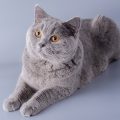Introduction to Amphibian Health
Understanding amphibian health is essential for anyone caring for these fascinating creatures, whether as pets or in the wild. In the UK, amphibians such as frogs, toads, and newts are a vital part of our ecosystems and increasingly popular as companion animals. Their health not only impacts individual well-being but also reflects the overall condition of our local environment. Amphibians have unique needs compared to other pets: they are highly sensitive to changes in temperature, humidity, and water quality—factors that are influenced by the UKs often unpredictable climate. Both pet owners and wildlife enthusiasts must be aware of these requirements to ensure amphibians thrive, prevent disease, and support conservation efforts. By focusing on their specific health challenges and recognising the early signs of illness, we can make a positive difference for both captive and wild populations across Britain.
Recognising Signs of Illness in Amphibians
Spotting early signs of illness or distress in your amphibian pets is crucial to ensuring their health and wellbeing. Whether you keep frogs, toads, or newts in the UK, being observant and proactive can make all the difference. Amphibians are often subtle in showing symptoms, so it’s important to know what behaviours and physical signs to look for.
Common Early Warning Signs
| Sign | Description | UK-specific Examples |
|---|---|---|
| Lethargy | Reduced activity; spending more time hiding or sitting still | Common frogs (Rana temporaria) that rarely leave the water or avoid feeding times |
| Skin Changes | Discolouration, sores, or excessive shedding of skin | Toads with patchy, reddened skin or newts with milky patches indicating fungal infection |
| Poor Appetite | Refusing food over several days | Captive newts ignoring live food such as bloodworms or crickets for a week or more |
| Abnormal Swimming/Movement | Twitching, floating awkwardly, or uncoordinated movements | Pond frogs in garden habitats swimming in circles or struggling to submerge properly |
| Breathing Difficulties | Lethargy at the water surface, gasping for air, or swollen throat area | Toads found repeatedly at the surface of a garden pond, appearing distressed during warm weather spells in the UK spring/summer months |
| Unusual Noises | Vocalising more than usual or producing distress calls when handled | Males calling outside of breeding season or making clicking noises when picked up in Kent or Devon regions |
| Weight Loss/Body Condition Changes | Noticeable thinning or bloating not related to breeding season | Bloated appearance in common frogs seen in South England gardens due to potential Red Leg disease outbreaks reported locally |
Observational Tips for UK Owners
- Routine Checks: Observe your amphibians daily. Check their skin condition and behaviour both during active periods and rest times.
- Know Normal Cycles: Be aware that some changes are seasonal. For example, wild-caught common newts may eat less during colder months.
- Record Keeping: Keep a diary of feeding habits, weight (if possible), and any notable behaviour. This helps spot trends before they become serious issues.
- Pond and Tank Hygiene: Poor water quality is a frequent cause of health problems. Regularly test for ammonia and nitrite levels using kits available from UK aquatic suppliers.
When to Seek Veterinary Help?
If your amphibian exhibits persistent symptoms from the table above—especially skin sores, rapid weight loss, or abnormal movement—consult a vet with experience treating exotic pets. In the UK, specialist veterinary practices are available in most major cities. Early intervention can prevent minor issues from becoming life-threatening.
Your Next Steps:
By keeping an attentive eye on your frogs, toads, and newts, and understanding what’s normal for their species and local environment, you’ll be able to catch health concerns early and seek appropriate care when needed.
![]()
3. Common Diseases Affecting UK Amphibians
Amphibians in the UK face a variety of health challenges, many of which can have serious consequences for both wild and captive populations. Understanding the most prevalent diseases is essential for responsible amphibian care and conservation. Below is a breakdown of some typical diseases encountered across the United Kingdom.
Chytridiomycosis
This devastating fungal disease, caused by the pathogen Batrachochytrium dendrobatidis (often shortened to Bd), has affected amphibian populations worldwide, including those in the UK. Chytridiomycosis attacks the skin of amphibians, which is vital for their respiration and water balance. Common symptoms include lethargy, abnormal skin shedding, discoloured patches on the skin, and in severe cases, sudden death. Outbreaks can wipe out entire local populations if not managed effectively.
Ranavirus Infections
Ranavirus is another serious threat to UK amphibians, especially common frogs (Rana temporaria) and newts. This viral infection can be rapidly fatal and often strikes during warmer months. Symptoms include skin ulcerations, swelling of limbs or body, bleeding from the mouth or vent, and sudden mass die-offs. Ranavirus spreads easily between ponds and can persist in the environment, making containment challenging.
Parasitic Infections
Amphibians are also susceptible to various parasitic infections, including internal parasites like nematodes and external parasites such as leeches. Signs of infestation may include weight loss, bloating, unusual lethargy, or visible parasites attached to the skin or found in faeces. These infections are often more problematic in captive settings where hygiene may lapse or stress levels are high.
Causes and Contributing Factors
The spread of these diseases is often linked to environmental changes, poor habitat quality, introduction of infected animals or water sources, and human activity such as moving amphibians between sites. High levels of stress due to overcrowding or poor water quality can also lower an amphibian’s immune defences, making them more vulnerable to illness.
Why Early Detection Matters
Spotting symptoms early is crucial for both pet owners and conservationists. Prompt action not only improves outcomes for affected amphibians but also helps prevent further spread within wild populations or collections. If you notice any signs of disease or unusual behaviour in your amphibians, consult a qualified vet with experience in exotic species as soon as possible.
4. Prevention and Husbandry Best Practices
Keeping amphibians healthy starts with prevention, and this begins long before your new pet arrives at home. By following proper husbandry practices that align with UK standards, you can significantly reduce the risk of disease and ensure your amphibians thrive. Let’s break down the essentials.
Enclosure Setup
A suitable enclosure is fundamental for amphibian health. Ensure tanks are appropriately sized, secure, and escape-proof. Provide ample hiding spots using UK-sourced, non-toxic decor, and select substrates that are easy to clean and safe if ingested (avoid sharp gravel or pine shavings). Amphibians need specific humidity and temperature ranges; invest in reliable thermometers and hygrometers to monitor these conditions daily.
Hygiene and Cleaning Routines
Regular cleaning prevents pathogen build-up. Always wash hands before and after handling amphibians or their enclosures to avoid cross-contamination. Remove uneaten food promptly, spot-clean waste daily, and perform deeper cleans weekly using reptile-safe disinfectants available from reputable UK suppliers.
| Cleaning Task | Frequency | Recommended Products (UK) |
|---|---|---|
| Spot-clean waste & uneaten food | Daily | Kitchen roll, reptile-safe tongs |
| Water change | 2–3 times/week | Dechlorinated tap water, water conditioner (e.g., ReptiSafe) |
| Full substrate change & disinfection | Every 4–6 weeks | Anigene, F10SC Veterinary Disinfectant |
Water Quality Control
Poor water quality is a major cause of illness in captive amphibians. In the UK, always use dechlorinated tap water or spring water—never distilled or softened water. Test water regularly for ammonia, nitrite, nitrate, and pH using aquarium test kits widely available from aquatic shops. Filtration is essential for aquatic species; clean filters as per manufacturer guidance but never all at once to maintain beneficial bacteria.
Key Water Parameters for Common UK-kept Amphibians
| Species | Temperature (°C) | pH Range | Nitrate (ppm) | Ammonia/Nitrite (ppm) |
|---|---|---|---|---|
| African Clawed Frog | 18–22 | 6.5–8.0 | <40 | <0.1 / <0.1 |
| Fire Salamander | 14–18 | 6.0–7.5 | <20 | <0.1 / <0.1 |
| Dart Frog (captive bred) | 22–26 | 6.0–7.0 | <10 | <0.1 / <0.1 |
Sourcing Amphibians Responsibly in the UK
The origin of your amphibian plays a significant role in its long-term health. Always source animals from reputable UK breeders or suppliers who provide health histories and avoid wild-caught specimens where possible to protect native populations and reduce disease risks. Ask sellers about quarantine procedures, recent health checks, and whether they work with local veterinary professionals experienced in exotics.
Top Tips for Responsible Sourcing:
- Select captive-bred over wild-caught whenever possible.
- Insist on seeing evidence of parasite screening or vet health checks.
- Avoid impulse purchases at markets without verifiable records.
By implementing these practical husbandry techniques and upholding high welfare standards recognised in the UK, you’ll give your amphibians the best chance at a healthy, happy life while also supporting responsible pet keeping across the community.
5. When to Seek Veterinary Help
Despite your best efforts at home, there will be times when professional veterinary assistance is essential for your amphibian’s health. Recognising these moments can make a significant difference in your pet’s recovery and wellbeing.
Signs That Home Care Isn’t Enough
Amphibians are often masters at hiding illness, so it’s crucial to observe them closely. If you notice persistent symptoms such as refusal to eat for more than a week, lethargy, rapid weight loss, abnormal skin shedding, visible wounds, swelling, or unusual lumps, it’s time to act. Other warning signs include discoloured patches on the skin, cloudy eyes, difficulty breathing, or changes in their usual behaviour. If home remedies have not shown improvement within a few days, or if symptoms worsen rapidly, do not delay seeking professional help.
Finding a Qualified UK Exotic Vet
In the UK, not every vet is experienced with amphibians or exotics. It’s important to find a practice that has expertise in treating amphibians. Start by looking for practices listed with the Royal College of Veterinary Surgeons (RCVS) that advertise exotic animal services. You can also seek recommendations from local reptile and amphibian societies, such as The British Herpetological Society or Amphibian and Reptile Groups of the UK (ARG UK). These communities often maintain lists of trusted vets familiar with the unique needs of amphibians.
Preparing for Your Vet Visit
When arranging an appointment, be ready to provide details about your amphibian’s environment, diet, recent changes in behaviour, and any treatments you’ve already attempted. Transport your pet in a secure and moist container to minimise stress and dehydration during travel. Remember, prompt veterinary care can save lives and prevent minor issues from becoming major health problems.
6. Useful UK Vet and Support Resources
Finding the right support for amphibian health is essential to ensure your pets thrive and receive prompt care when needed. The UK is home to several reputable organisations, directories, and online resources dedicated to amphibian welfare and veterinary guidance. Below you’ll find a curated list of trusted options to help you connect with knowledgeable professionals and stay informed about best practices.
Veterinary Directories Specialising in Exotic and Amphibian Care
- RCVS Find a Vet: The Royal College of Veterinary Surgeons offers an online directory (findavet.rcvs.org.uk) where you can search for practices experienced in exotic species, including amphibians.
- British Veterinary Zoological Society (BVZS): This society provides information on vets with expertise in zoological medicine—ideal for those seeking advanced amphibian care.
Reputable UK Organisations Focused on Amphibian Health
- Amphibian and Reptile Groups of the UK (ARG UK): A network supporting amphibian conservation, offering advice on welfare and disease prevention. Visit arguk.org.
- Froglife: This charity promotes the conservation of amphibians and provides helpful resources for pet owners. Explore their guidance at froglife.org.
Online Resources for Amphibian Welfare and Owner Support
- ExoticDirect Blog: Offers practical advice on amphibian health issues relevant to UK keepers, from husbandry tips to disease awareness.
- The British Herpetological Society (BHS): Their website features educational materials, events, and contacts for further support: thebhs.org.
Tips for Using These Resources Effectively
- If you suspect illness in your amphibian, use these directories to locate a vet with exotic animal experience.
- Stay informed by following updates from reputable organisations, especially regarding emerging diseases or changes in best practice.
Your Local Community Matters
Don’t forget that local reptile clubs, forums, and social media groups can be valuable for sharing experiences and recommendations unique to your region. By connecting with both national organisations and local experts, you’ll give your amphibian companions the healthiest life possible in the UK.


